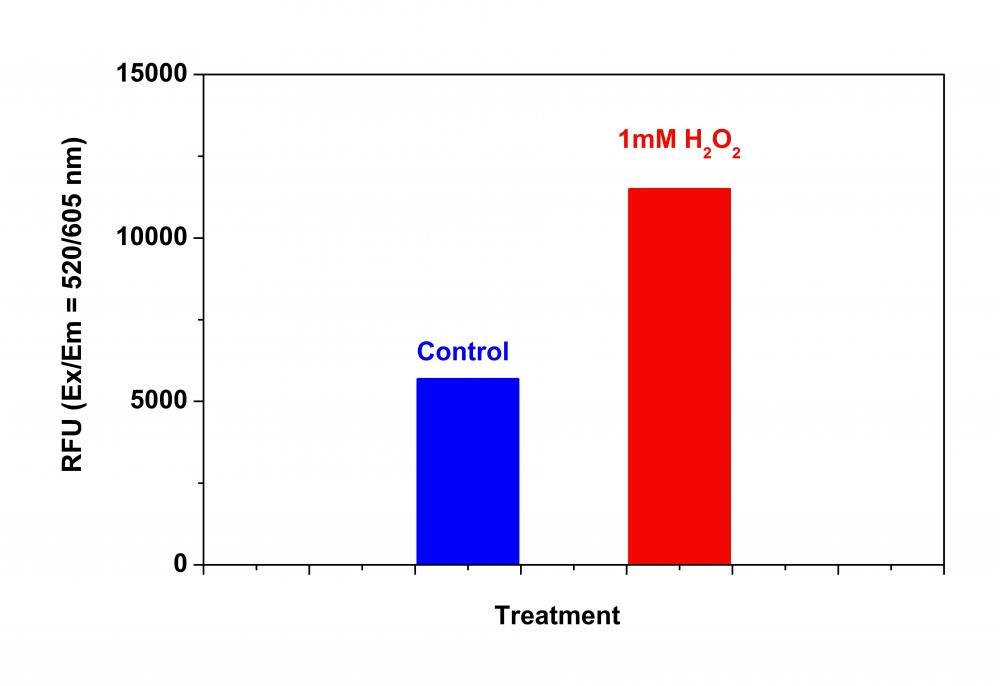Cell Meter™ Fluorimetric Intracellular Total ROS Activity Assay Kit
Red Fluorescence
Reactive oxygen species (ROS) are natural byproducts of the normal metabolism of oxygen and play important roles in cell signaling. However, ROS levels can increase dramatically during oxidative stress-related states, resulting in significant damage to cell structures. The role of oxidative stress in cardiovascular disease, diabetes, osteoporosis, stroke, inflammatory diseases, neurodegenerative disease, and cancer has been well established. Through ROS measurements, researchers can determine how oxidative stress modulates varied intracellular pathways. The Cell Meter™ Fluorimetric Intracellular Total ROS Activity Assay Kit uses our unique ROS sensor, Amplite® ROS Red, to quantify ROS in live cells. Amplite® ROS Red is cell-permeable and generates red fluorescence when reacting with ROS. The Cell Meter™ Fluorimetric Intracellular Total ROS Activity Assay is easy to perform using an optimized mix-and-read format. It provides a sensitive, one-step fluorimetric assay to detect intracellular ROS in live cells with 1-2 hours incubation. The assay can be performed in a convenient 96-well or 384-well microtiter-plate format and easily adapted to automation without a separation step. Its signal can be easily read using either a fluorescence microplate reader or a fluorescent microscope. It can be used to either quantify ROS activities or screen for ROS inhibitors.


| Catalog | Size | Price | Quantity |
|---|---|---|---|
| 22901 | 200 Tests | Price |
Storage, safety and handling
| H-phrase | H303, H313, H333 |
| Hazard symbol | XN |
| Intended use | Research Use Only (RUO) |
| R-phrase | R20, R21, R22 |
| UNSPSC | 12352200 |
Instrument settings
| Fluorescence microscope | |
| Excitation | 520 nm |
| Emission | 605 nm |
| Recommended plate | Black wall/clear bottom |
| Instrument specification(s) | Texas Red filter set |
| Fluorescence microplate reader | |
| Excitation | 520 nm |
| Emission | 605 nm |
| Cutoff | 590 nm |
| Recommended plate | Black wall/clear bottom |
| Instrument specification(s) | Bottom read mode |
Documents
Contact us
| Telephone | |
| Fax | |
| sales@aatbio.com | |
| International | See distributors |
| Bulk request | Inquire |
| Custom size | Inquire |
| Technical Support | Contact us |
| Request quotation | Request |
| Purchase order | Send to sales@aatbio.com |
| Shipping | Standard overnight for United States, inquire for international |
Page updated on December 14, 2025
